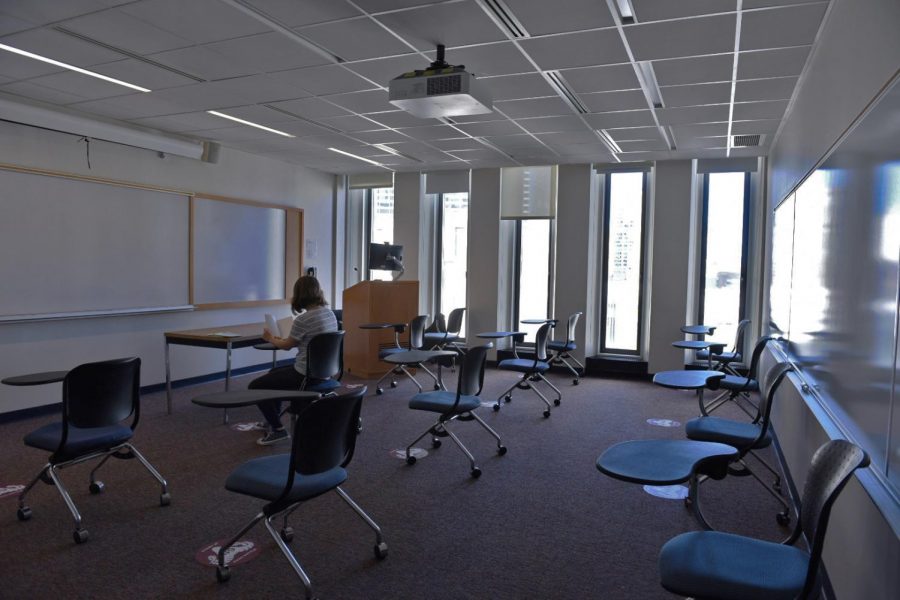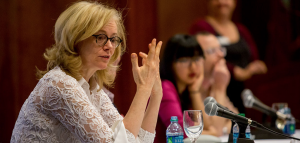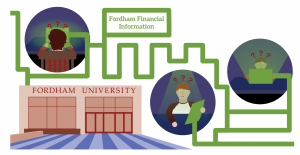Fordham Retention Rate Continues to Decline
Despite university efforts, fewer students than ever are coming back to the classroom
Fordham’s retention and enrollment rates have dropped again, largely die to the coronavirus pandemic. This drop has had a significant effect on the school’s budget.
December 3, 2020
Retention and enrollment rates are dropping once again, continuing a yearslong trend confirmed by new data released from the Fordham Fall 2020 Factbook. As fewer students choose to return to campus, the university increasingly struggles to counter the loss of revenue from tuition and room and board.
The Fordham Class of 2023 — across both the Rose Hill and Lincoln Center campuses — had 2,260 students in the fall of 2019, according to the factbook.
This year, 89.4% of those students returned. The most recent first-year class that entered in fall 2020 is small compared to past years, with just over 2,000 students. This is the smallest entering class since 2013.
Taking a closer look at the individual colleges affected shows that some were harder hit than others. At Fordham College at Lincoln Center (FCLC), only 83.3% of the Class of 2023 chose to return for the fall. This is the lowest second-year return rate listed in the factbook for undergraduate students, which dates back to 2006. Comparatively, the Class of 2022 had a retainment rate of 89%.
The university is heavily dependent on high student enrollment and retention rates for funding. Tuition and auxiliary fees, which include room and board and dining, are crucial components of the ability to have a larger budget. With the university already losing money from a lack of event rentals and other coronavirus restrictions, a dip in both of these numbers could lead to drastic cuts in order to balance the budget.
Out of the 539 students who were originally part of the class of 2021, only 396 have re-enrolled.
The higher percentage student contributions are in their budgets, the more universities suffer when there is a drop in enrollment. Schools consistently aim to increase enrollment and retention, meaning that simply maintaining the same levels is considered a shortfall.
At Fordham, tuition alone makes up 79.3% of the university’s budget. The university’s auxiliary revenue makes up an additional 13.6% of the budget. In total, over 92% of the budget directly depends on students paying tuition, living on campus and using the dining halls — and right now, that’s not happening.
Other universities have a lowered level of student enrollment dependency. Columbia University derived 24% of its operating budget from student tuition in 2019. Tuition and fees account for 57% of New York University’s budget, and housing and dining account for an additional 10%.
The New School more closely reflects Fordham, with 73% of its budget coming from net tuition and 11% from auxiliary enterprises.
Higher education enrollment was already suffering before COVID-19, mostly due to the stability of the economy and the rising cost of college. Even students in their fourth year of college are choosing to leave rather than stay for two more semesters.
For the Class of 2010 at FCLC, about 319 of the original 404 first-years returned for their senior year. Now, the numbers have dropped. Out of the 539 students who were originally part of the class of 2021, only 396 have re-enrolled.
“A (Fordham) staff member said that the school (I transferred to) already had enough people, that they wouldn’t want me, that they wouldn’t give me money.” Sam Vogel, formerly FCLC ’22
Sam Vogel, formerly FCLC ’22, transferred to The New School. According to Vogel, the Fordham staff member she met with regarding transferring tried to persuade her heavily to stay.
“A (Fordham) staff member said that the school (I transferred to) already had enough people, that they wouldn’t want me, that they wouldn’t give me money,” Vogel said.
For Vogel, she decided to transfer regardless, mainly for financial reasons. She also cited additional frustrations with the small class choices for the college and how the school was much less secular than it presented itself to be.
The Gabelli School of Business (GSB) at both Rose Hill and Lincoln Center suffered drops as well, although not as steep. There was a roughly 4% drop in returning second-year students from the Class of 2018 to the Class of 2019, and about 66 fewer students enrolled.
To emphasize that, 10% less students enrolled in GSB overall this year compared to last year. Although this comprises fewer than 100 students, that is 10% less funding to be put toward university costs — such as running facilities and paying faculty.
Fordham administrators have already indicated that this is a much smaller enrollment than they anticipated for the fall term, and as a result, the university suspended retirement contributions for Fordham staff until further notice.



















